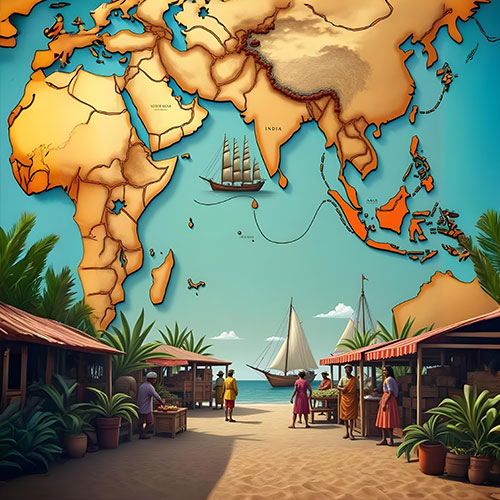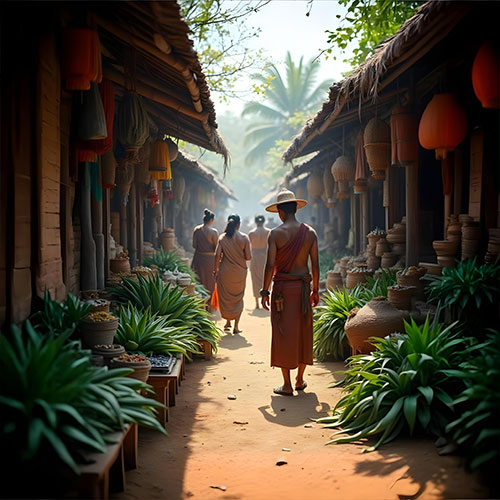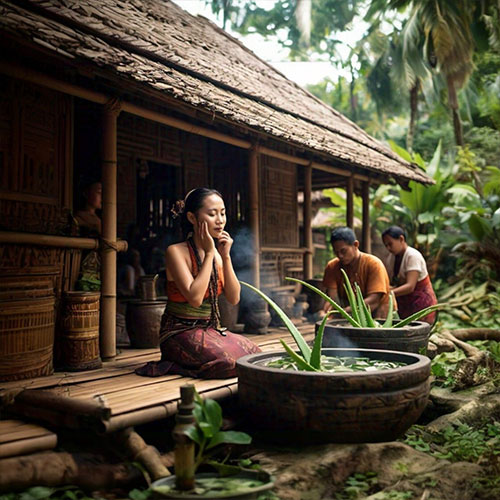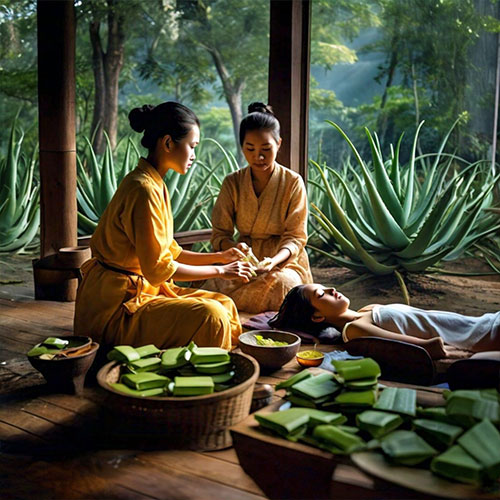






Aloe vera, known for its soothing, healing, and rejuvenating properties, has long been celebrated in cultures around the world. Its arrival in Southeast Asia during the 17th century marked a new chapter in the plant’s history. Through maritime trade, aloe vera found its way into the hands of Southeast Asian communities, where it seamlessly integrated with traditional practices and became a cherished part of everyday life.
This blog explores how aloe vera’s versatility and benefits allowed it to thrive in Southeast Asia, blending ancient wisdom with modern wellness trends.
During the 17th century, Southeast Asia was a hub of bustling trade, with maritime routes connecting it to regions like India, China, and the Middle East. Aloe vera, already thriving in India, made its way to Southeast Asia aboard trading ships. Traders seeking to expand the plant’s reach introduced it to the vibrant markets of countries like Thailand, Indonesia, Malaysia, and Vietnam.
The tropical climate and fertile soil of Southeast Asia proved to be ideal for aloe vera cultivation. Local communities, curious about this hardy plant, quickly began exploring its uses and integrating it into their lives.
Southeast Asian markets were lively centers of commerce and culture, and aloe vera soon became a staple in these vibrant spaces. Traders displayed fresh aloe vera leaves alongside exotic spices, fruits, and herbs. Villagers and urban dwellers alike were drawn to the plant, intrigued by its unique texture and purported health benefits
The popularity of aloe vera grew as people began experimenting with its gel, incorporating it into their beauty regimens, diets, and traditional healing practices. Its affordability and accessibility ensured that aloe vera became a household item across the region.
One of aloe vera’s most significant contributions in Southeast Asia was its integration into traditional medicine. Traditional healers, known as bomoh in Malaysia, dukun in Indonesia, and mo phi in Thailand, blended aloe vera gel with native herbs to craft powerful remedies. The gel’s soothing properties made it a natural choice for treating skin conditions like burns, wounds, and rashes. Combined with herbs like turmeric, ginger, or lemongrass, aloe vera became a key ingredient in remedies for digestive health, fever reduction, and inflammation.
In some communities, aloe vera was also used in rituals to cleanse the body and promote spiritual healing, reflecting its revered status as a plant of vitality and renewal.
Southeast Asia’s appreciation for aloe vera extended beyond medicine to beauty and wellness practices. Women in the region used aloe vera gel as a natural moisturizer and hair conditioner, valuing its hydrating and restorative qualities.
In traditional homes, herbal baths infused with aloe vera leaves and other aromatic plants were prepared for relaxation and rejuvenation. These rituals emphasized the holistic nature of Southeast Asian wellness practices, which often combined physical care with mental and spiritual well-being.
Today, aloe vera continues to play a central role in Southeast Asia’s approach to health and beauty. Modern wellness trends have embraced aloe vera in new ways, with products such as packaged aloe vera gels, drinks, and spa treatments becoming widely available.
However, traditional uses of aloe vera remain deeply rooted in many communities. Families still grow the plant at home, using its gel for minor injuries, skincare, and as a natural remedy for various ailments. This balance of old and new reflects Southeast Asia’s ability to preserve cultural heritage while embracing innovation.
Aloe vera’s journey to Southeast Asia is a testament to the plant’s adaptability and universal appeal. From its introduction through trade to its integration into traditional medicine and modern wellness practices, aloe vera has become a beloved and indispensable part of Southeast Asian life.
Whether used in a rustic village hut or a contemporary spa, aloe vera continues to symbolize healing, rejuvenation, and the enduring connection between humans and nature. Its legacy in Southeast Asia serves as a reminder of the power of natural remedies and the importance of preserving traditional wisdom in a rapidly changing world.
Coming Up Next: A Dragon’s Embrace—Aloe Vera in China!
Unveil the story of how aloe vera reached the majestic lands of China, weaving itself into the rich tapestry of Chinese medicine and skincare traditions. In this chapter, we’ll explore how this remarkable plant became a cherished ingredient, embraced for its healing and rejuvenating properties. Don’t miss aloe vera’s captivating journey into the heart of China!